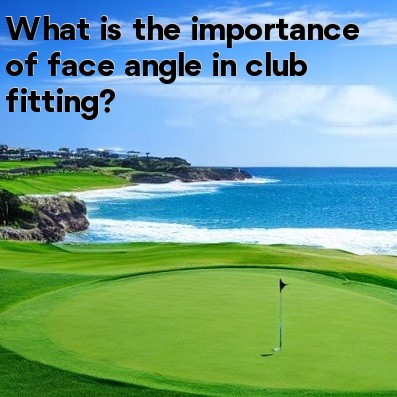
The Importance of Face Angle in Club Fitting
When it comes to golf club fitting, one crucial factor that often gets overlooked is the face angle of the club. The face angle plays a significant role in determining the trajectory and direction of the golf ball upon impact. Getting the correct face angle is essential for maximizing distance, accuracy, and consistency in your shots.
What is Face Angle?
The face angle refers to the position of the clubface in relation to the target line at impact. It determines the starting direction of the ball and affects its initial flight path. Face angle is typically measured in degrees and can be open (pointing right of the target line), closed (pointing left of the target line), or square (aligned with the target line).
Impact on Shot Shape
The face angle greatly influences the shot shape. An open face angle tends to promote a fade or slice, causing the ball to curve from left to right for right-handed golfers. A closed face angle, on the other hand, promotes a draw or hook, causing the ball to curve from right to left. A square face angle produces a straighter shot with less curve.
Distance and Accuracy
Having the correct face angle is crucial for maximizing distance and accuracy. If the face angle of the club is open or closed at impact, it can result in errant shots, leading to lost distance and accuracy. A square face angle helps you align the clubface correctly and allows for a more efficient transfer of energy from the club to the ball, leading to better results.
Consistency
Consistency is key in golf. Having a consistent face angle throughout your swing ensures predictable and repeatable results. If the face angle varies from shot to shot, it becomes challenging to control the trajectory and direction of the ball. By fitting clubs with the correct face angle for your swing, you can enhance your consistency, leading to better overall performance on the course.
Custom Club Fitting
Getting custom-fit clubs is essential in optimizing your face angle and overall club performance. During a club fitting session, a professional club fitter will analyze your swing and ball flight to determine the ideal face angle for your game. They may use launch monitors, video analysis, and other technologies to assess your swing dynamics and provide recommendations for the correct face angle.
Adjustability
Many modern golf clubs offer adjustability options that allow you to fine-tune the face angle. These adjustable features enable you to personalize your club's face angle to match your swing characteristics and shot preferences. It's important to consult with a club fitting professional or refer to the manufacturer's guidelines when making adjustments to ensure optimal performance.
Conclusion
The face angle in golf club fitting is a crucial aspect that should not be overlooked. It significantly affects shot shape, distance, accuracy, and consistency. Getting the correct face angle through custom club fitting or adjustability options can greatly enhance your performance on the golf course. So, the next time you're considering club fitting, make sure to pay attention to the face angle for better results.





